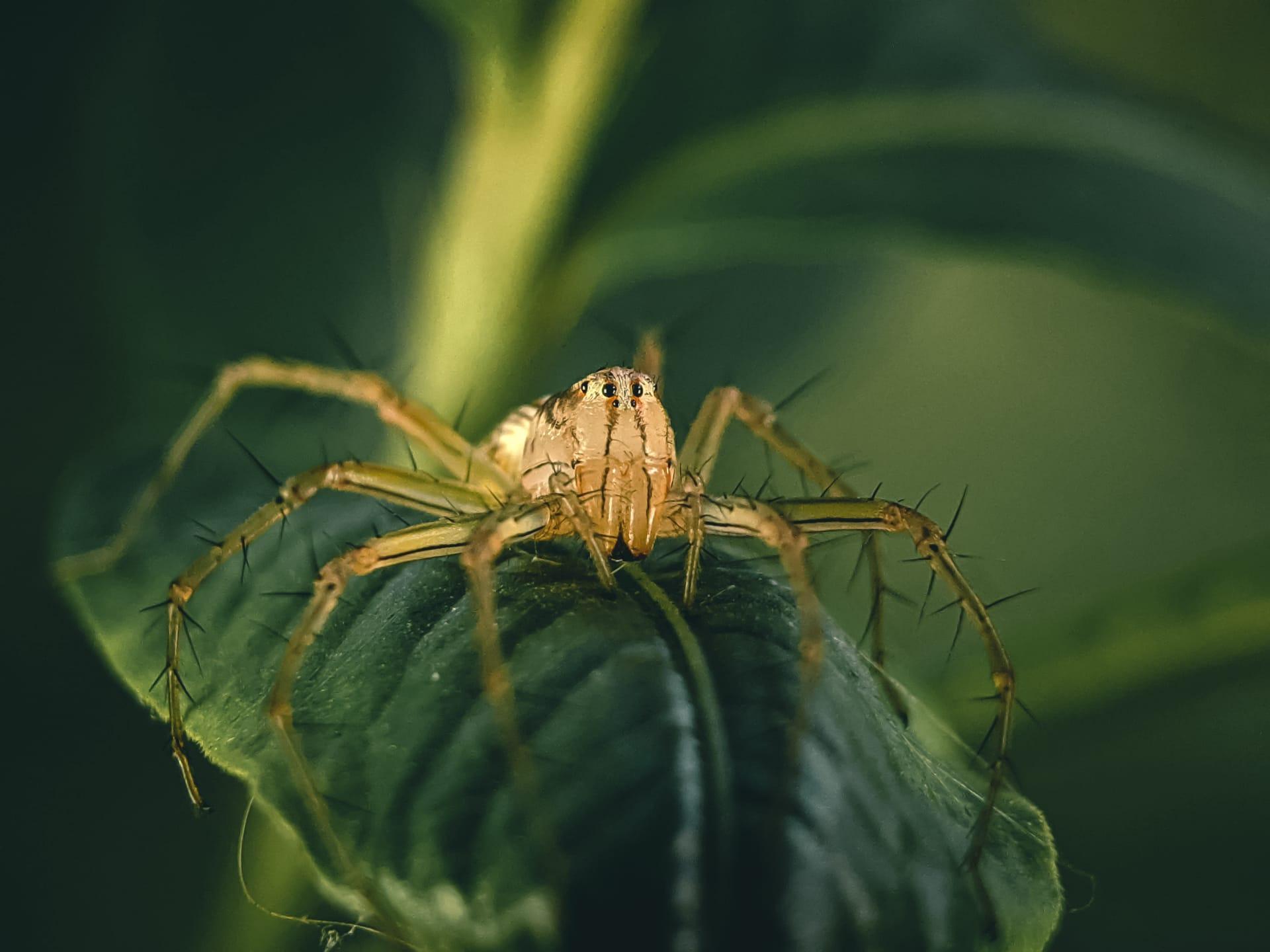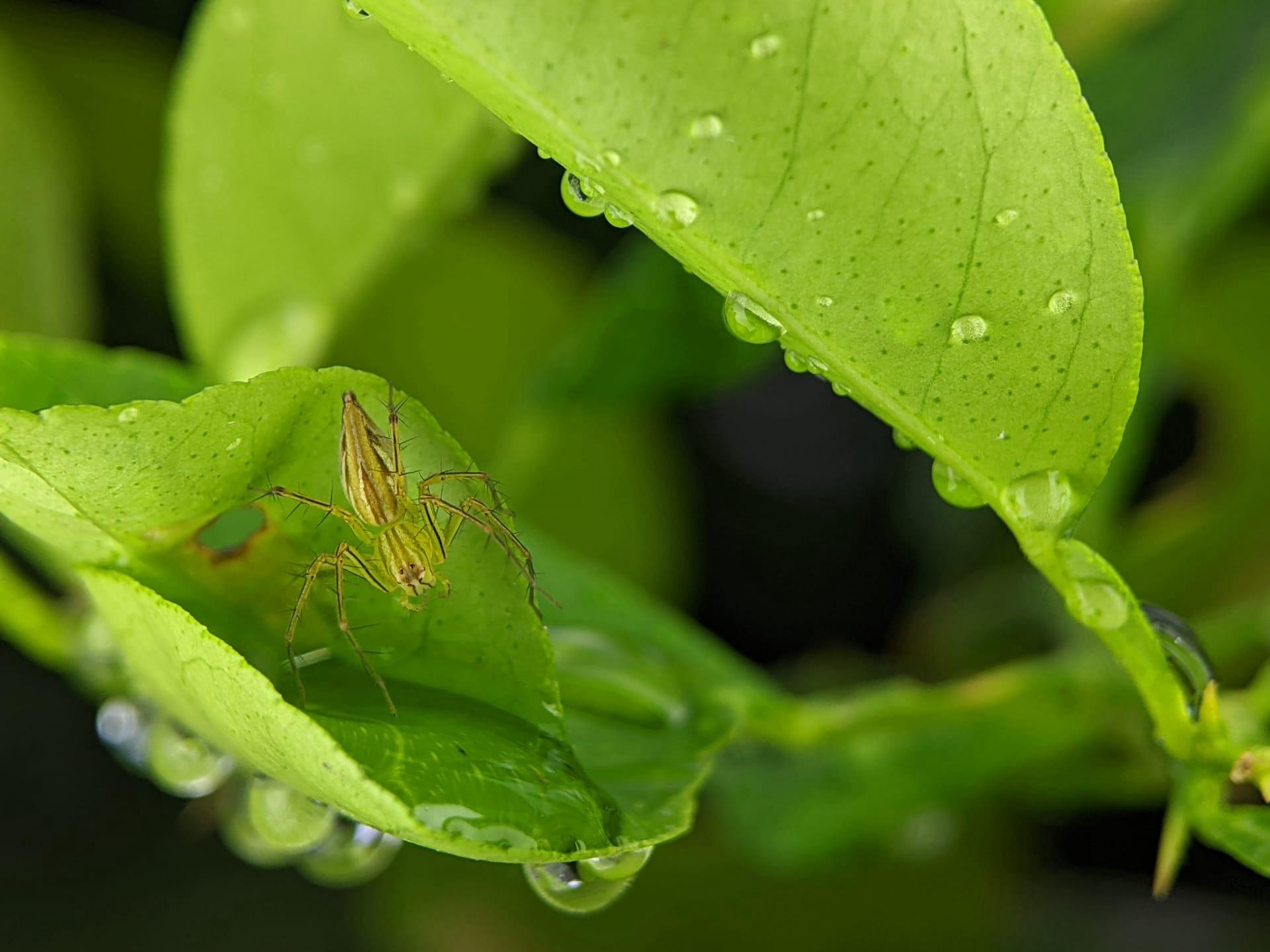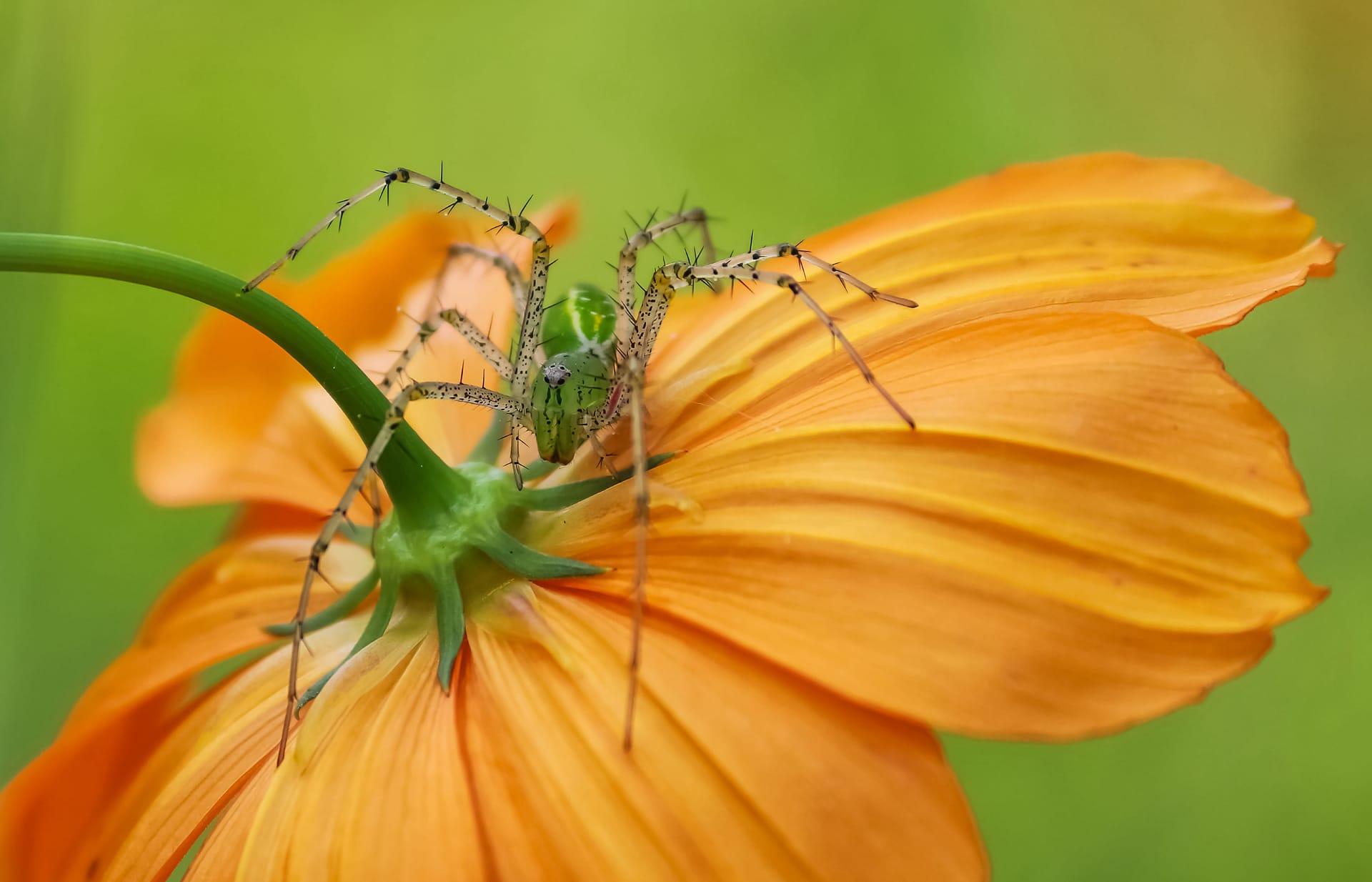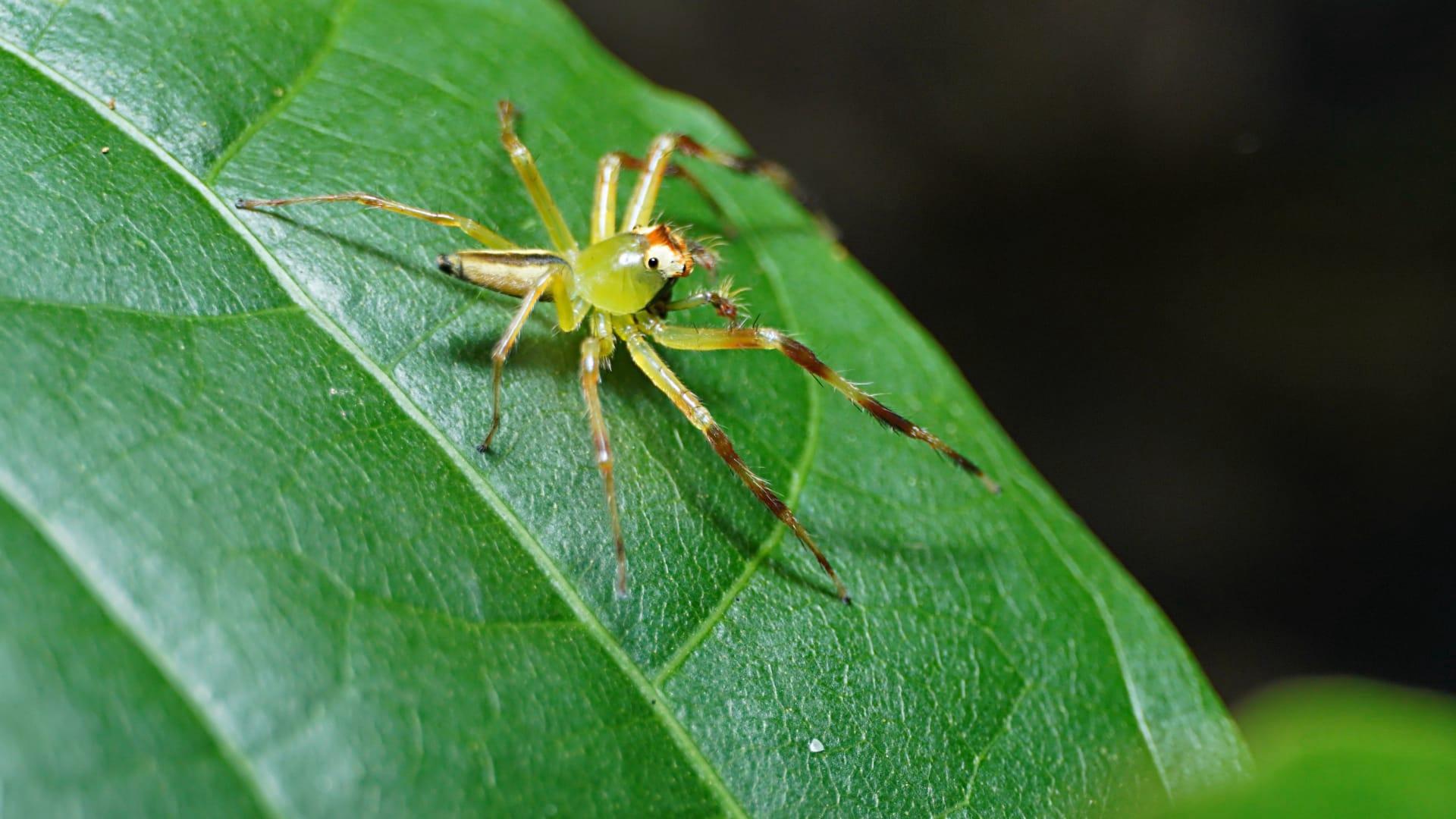Green Lynx Spider
- Home /
- Mini Encyclopedia /
- Animal /
- Green Lynx Spider
1
The Green Lynx Spider, scientifically known as Peucetia viridans, belongs to the family Oxyopidae. This species is characterized by its striking green coloration, making it easily distinguishable among spiders. An adult Green Lynx Spider typically measures between 12 to 22 millimeters in length, with females generally larger than males. Its vibrant green hue not only serves as camouflage among foliage but also plays a crucial role in its hunting strategy.
Geographically, the Green Lynx Spider is primarily found in the southeastern United States, extending into parts of the Southwest and down into Central America. Its habitat is diverse, ranging from wooded areas and shrublands to gardens and agricultural fields. This wide distribution is facilitated by its adaptability to various environments and its ability to thrive in both rural and suburban settings. The spider's presence in these areas often goes unnoticed due to its excellent camouflage and tendency to reside in higher foliage.

2
Question: Is the Green Lynx Spider venomous, and is it dangerous to humans?
Answer: While the Green Lynx Spider is indeed venomous, like most spiders, its venom is primarily used for subduing prey and is not generally considered a threat to humans. Bites are rare and usually occur only when the spider is provoked or handled. In the few recorded instances of bites, the symptoms have been mild, typically involving minor pain, swelling, and itching. It's important to note that the Green Lynx Spider is not aggressive towards humans and prefers to avoid contact, making encounters that lead to bites extremely rare.

3
The Green Lynx Spider exhibits unique survival strategies that set it apart from other spiders. One of its most notable tactics is its hunting method. Unlike many spiders that rely on webs to catch prey, the Green Lynx Spider actively hunts and pounces on its prey, much like a lynx. This behavior involves stalking insects and suddenly leaping onto them, a method that is highly effective in capturing flying insects such as moths and bees.
In terms of reproduction, the female Green Lynx Spider demonstrates a strong maternal instinct. She aggressively guards her egg sac and has been observed displaying defensive behavior against potential predators. This protective nature ensures a higher survival rate for her offspring. Additionally, the female spider often chooses elevated and concealed locations for laying her eggs, further safeguarding them from predators.

4
In the ecosystem, the Green Lynx Spider plays a significant role as both predator and prey. As a predator, it helps control insect populations, particularly those of agricultural pests. This makes it a valuable ally in natural pest control, aiding in the maintenance of a balanced ecosystem in the areas it inhabits.
As prey, the Green Lynx Spider is a crucial part of the food chain. It serves as a food source for various birds, larger insects, and other spiders. This predation plays a role in controlling the population of the Green Lynx Spider itself, ensuring that it does not become overly abundant and disrupt the ecological balance.

5
Film: "The World of Spiders: A Journey into the Green Lynx’s Realm" is a notable documentary from the United States, released in 2019. This film provides an in-depth look into the life of the Green Lynx Spider, showcasing its unique hunting techniques, mating rituals, and maternal behaviors. The documentary beautifully captures the spider's natural habitat and emphasizes its role in the ecosystem.
Book: "Spiders of the South: A Field Guide", published in the USA in 2017, includes a comprehensive section on the Green Lynx Spider. Authored by noted arachnologist Dr. Emily Stone, the book offers detailed insights into the species' behavior, habitat, and identification tips, making it an invaluable resource for enthusiasts and researchers alike.
Book: "The Green Hunters: Stories of the Oxyopidae", a UK publication from 2020, delves into the fascinating world of lynx spiders, with a focus on the Green Lynx Spider. Written by naturalist Simon Hayes, the book combines scientific research with engaging narratives, providing readers with a captivating exploration of these unique spiders and their place in nature.